When designing a patio, choosing the right material can make a significant difference in its durability, aesthetics, and overall cost. Concrete slabs have been a popular choice for patios due to their unique blend of strength, versatility, and affordability. Below, we delve into seven compelling reasons why concrete slabs might be the perfect fit for your outdoor space.
1. Why Choose Concrete Slabs for Outdoor Patios?
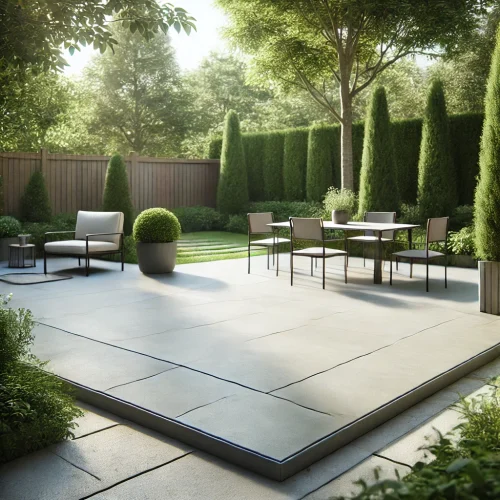
Yes, concrete slabs are a good choice for patios because they are durable, versatile, and cost-effective. For anyone considering a long-lasting and low-maintenance option, concrete slabs stand out due to several key attributes. Let’s explore these qualities:
- Durability: Concrete slabs are made from a strong and durable material that can withstand heavy loads and extreme weather. They are resistant to cracking, chipping, wear, and tear.
- Versatility: Concrete slabs can be used to create a variety of outdoor spaces, from traditional to contemporary. They can be used for patios, paths, driveways, and more.
- Cost-effective: Concrete slabs are a good value for the money. A concrete slab typically costs between $100 and $200 per square foot, and the total cost to install a concrete patio is usually between $865 and $1,085 for a 120-square-foot space.
- Quick to install: Concrete slabs are generally quicker to install than pavers.
- Uniform aesthetic: Concrete slabs are known for their consistent, uniform look.
- Sealable: Concrete slabs can be treated with sealants to make them more resistant to stains and moisture.
- However, pavers may be a better choice if you want a greater variety of shapes and colors, or if you want to include curves or pathways in your design.
2. Concrete Patio Installation – Simple and Efficient
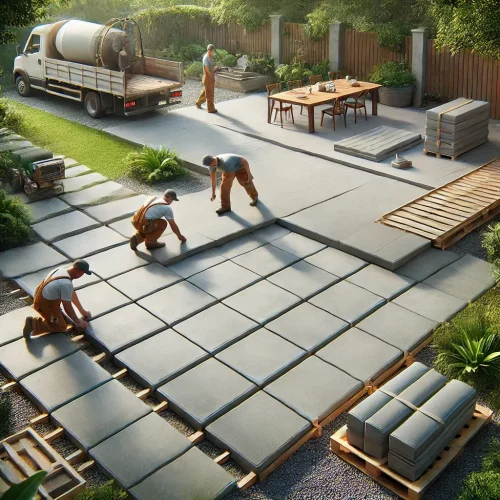
Concrete patios offer one of the simplest installation processes, reducing overall labor costs and time. So, how long does it take? In most cases, installing a concrete patio can be completed in just a few days, depending on the size and complexity of the project. Compared to materials like pavers, concrete slabs require fewer steps, making them faster to install, which translates to cost savings. Additionally, concrete’s uniformity reduces potential errors in alignment and spacing, contributing to a polished, cohesive look.
3. Durable Patio Materials That Stand the Test of Time
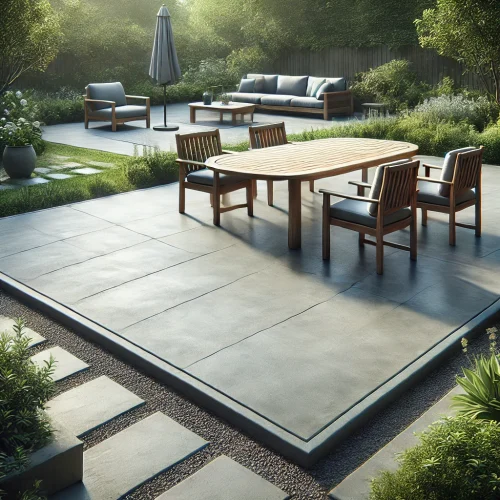
When you invest in a patio, longevity is a top priority. Concrete slabs are highly durable patio materials that can handle high foot traffic, heavy furniture, and extreme weather conditions. Due to its strength and resistance to wear, concrete is less likely to require frequent repairs or replacement, making it a wise choice for long-term value.
4. Low-Maintenance Outdoor Flooring That Saves Time and Effort
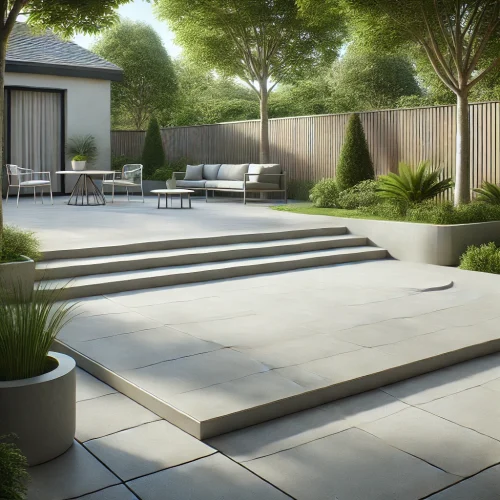
For homeowners and businesses, minimizing maintenance is a major factor in choosing a patio material. Concrete slabs are inherently low-maintenance outdoor flooring, needing only periodic cleaning and occasional resealing. This minimal upkeep keeps the patio looking fresh, while avoiding constant repairs or special cleaning techniques.
5. Affordable Patio Solutions That Fit a Range of Budgets
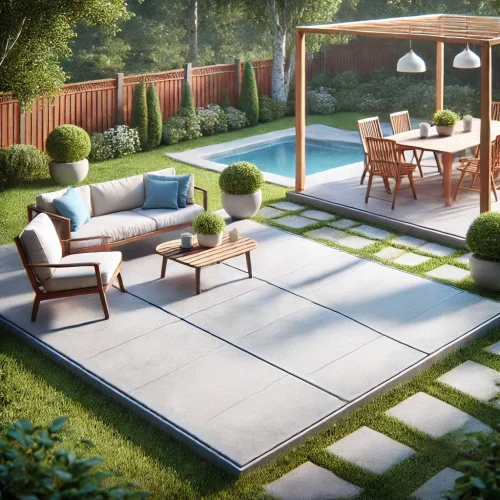
Concrete slabs are known for being cost-effective, offering a solid balance between affordability and quality. With typical installation costs ranging from $865 to $1,085 for a 120-square-foot patio, concrete provides a durable and attractive option without breaking the bank. Compared to other materials like natural stone or brick, concrete slabs provide excellent value for money.
6. Weather-Resistant Patio Options for Every Climate
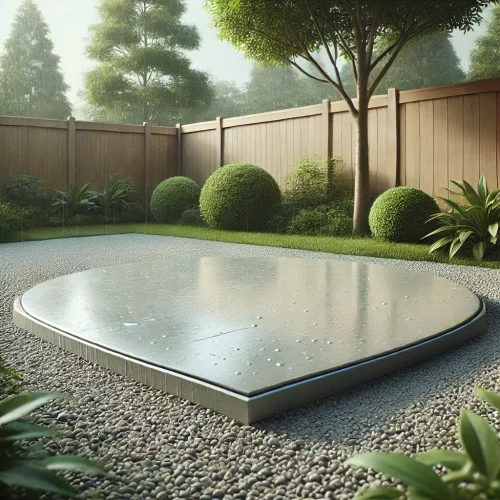
Another significant benefit of concrete slabs is their weather resistance. Whether you live in a region prone to heat, rain, or even snowfall, concrete remains resilient. Sealants can be applied to enhance this weather resistance further, protecting the surface from moisture infiltration and stains. This makes concrete a sustainable patio construction choice, built to withstand different climates while retaining its look and integrity.
7. Enhancing Outdoor Living Space Durability and Versatility
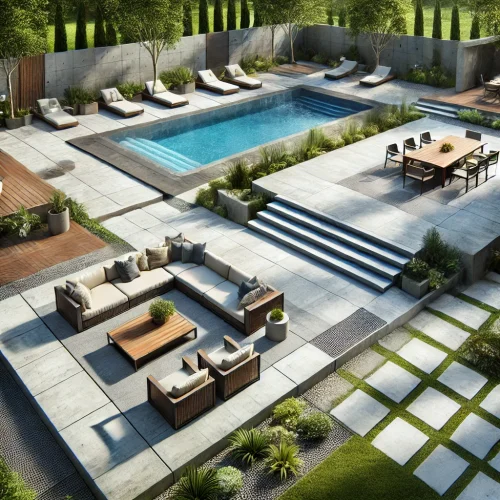
Concrete slabs are incredibly versatile, accommodating a variety of design styles, shapes, and sizes. From traditional to modern layouts, concrete can be customized with stains, stamps, or textures to achieve nearly any aesthetic. This versatility allows homeowners to use concrete not only for patios but also for paths, driveways, and even poolside areas. Its adaptability makes it an excellent choice for creating durable, multi-functional outdoor living spaces.
Additional Considerations – Concrete vs. Pavers
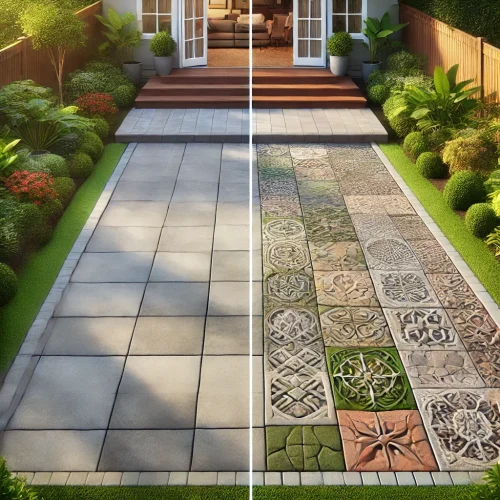
While concrete offers many advantages, some homeowners may prefer pavers for a few reasons. Pavers allow for more design flexibility with different shapes, colors, and patterns, making them ideal for creating intricate layouts, curves, and pathways. If customization and variety are priorities, pavers may be the way to go. However, for a uniform look, quick installation, and durability, concrete slabs are a top-tier option.
Conclusion
Concrete slabs provide a balance of durability, affordability, and aesthetic appeal, making them a practical and stylish choice for patio surfaces. With advantages like low maintenance, weather resistance, and versatility, concrete slabs meet the demands of both homeowners and business owners looking for a lasting, cost-effective patio solution.
